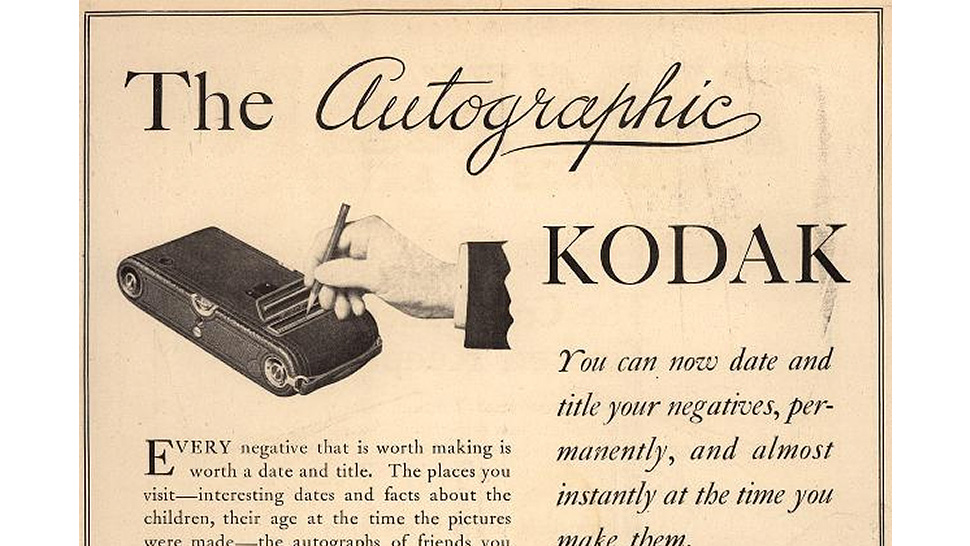These days there’s a mountain of extra data saved every time you snap a digital photo. So figuring out where and when a shot was taken requires minimal detective work. Back in the days of film it wasn’t so easy, so Kodak built a camera in 1914 called the Autographic that let photographers sign and denote their shots for easy reference later on. Basically, it was the world’s first camera with EXIF data.
On the back of the camera was a small panel where users could jot a note — whether a signature, a date, a description — on a piece of carbon paper with a metal stylus. When the panel was opened for a few seconds, the note would be exposed onto the margin of the print.
The feature was ahead of its time and never really caught on, or people just realised they could write on the back of prints with a pencil. Either way, Kodak discontinued the cameras back in 1932, and the idea was completely abandoned. And it’s too bad because appending your John Hancock to every shot you take would be a lovely personal touch. [Creative Pro via PetaPixel]

Picture: Wikipedia
